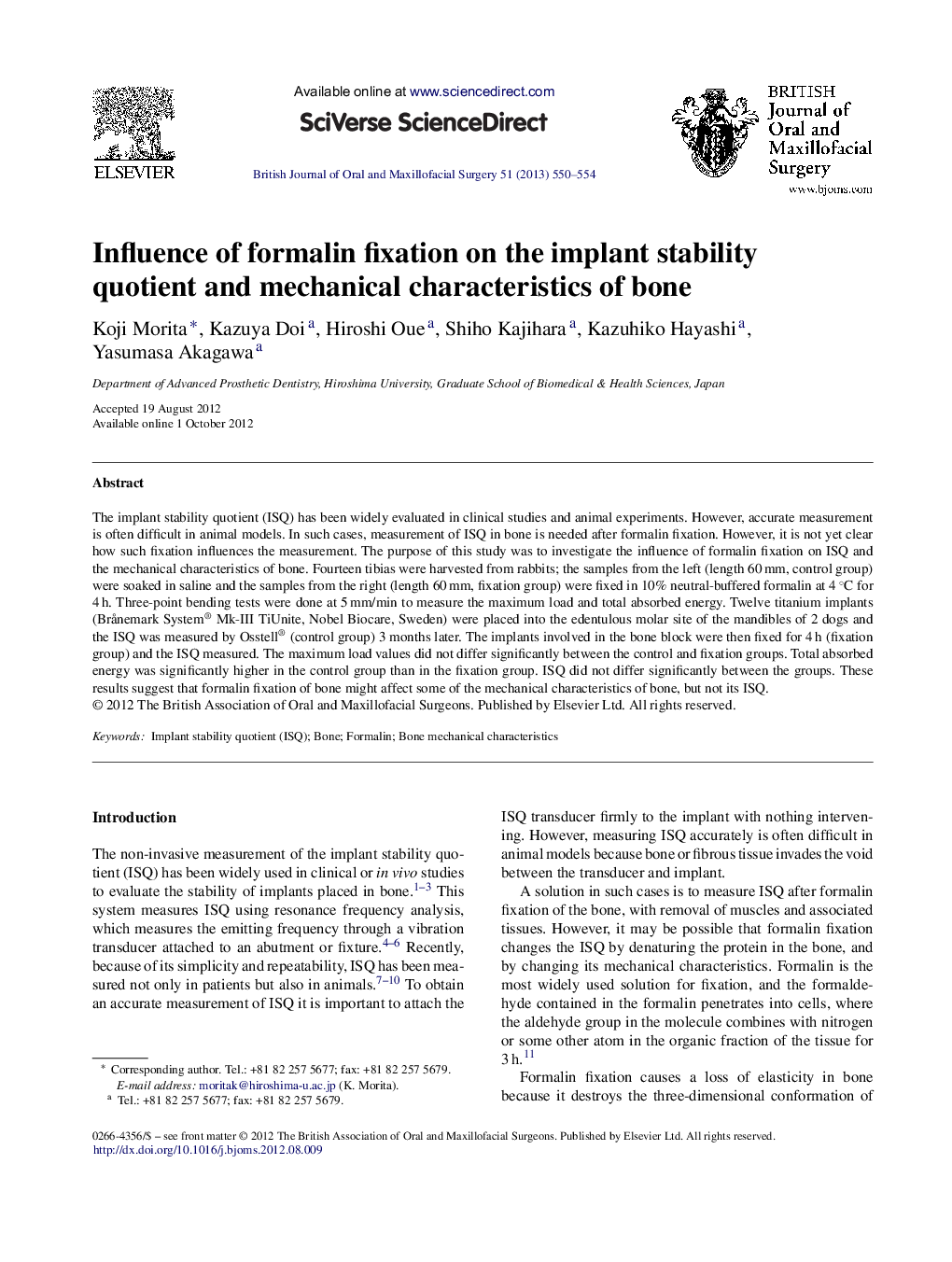| Article ID | Journal | Published Year | Pages | File Type |
|---|---|---|---|---|
| 3123441 | British Journal of Oral and Maxillofacial Surgery | 2013 | 5 Pages |
The implant stability quotient (ISQ) has been widely evaluated in clinical studies and animal experiments. However, accurate measurement is often difficult in animal models. In such cases, measurement of ISQ in bone is needed after formalin fixation. However, it is not yet clear how such fixation influences the measurement. The purpose of this study was to investigate the influence of formalin fixation on ISQ and the mechanical characteristics of bone. Fourteen tibias were harvested from rabbits; the samples from the left (length 60 mm, control group) were soaked in saline and the samples from the right (length 60 mm, fixation group) were fixed in 10% neutral-buffered formalin at 4 °C for 4 h. Three-point bending tests were done at 5 mm/min to measure the maximum load and total absorbed energy. Twelve titanium implants (Brånemark System® Mk-III TiUnite, Nobel Biocare, Sweden) were placed into the edentulous molar site of the mandibles of 2 dogs and the ISQ was measured by Osstell® (control group) 3 months later. The implants involved in the bone block were then fixed for 4 h (fixation group) and the ISQ measured. The maximum load values did not differ significantly between the control and fixation groups. Total absorbed energy was significantly higher in the control group than in the fixation group. ISQ did not differ significantly between the groups. These results suggest that formalin fixation of bone might affect some of the mechanical characteristics of bone, but not its ISQ.
